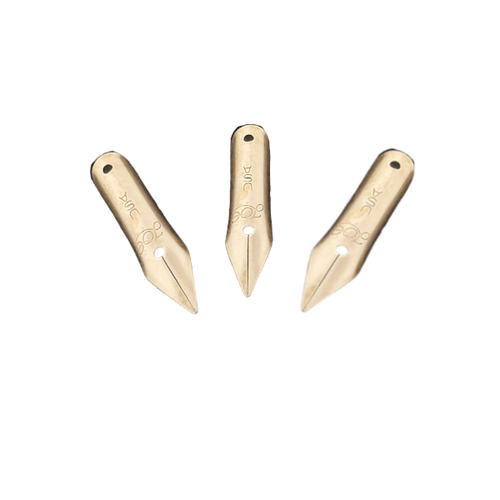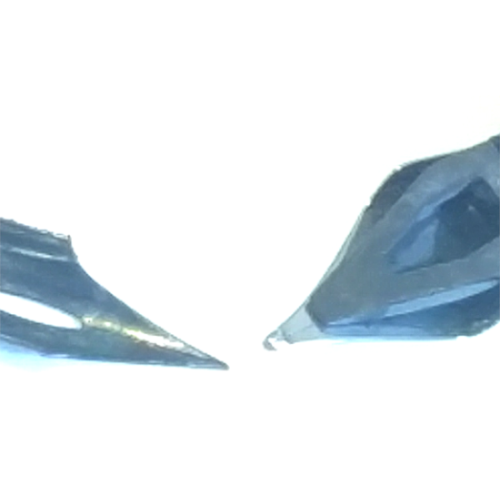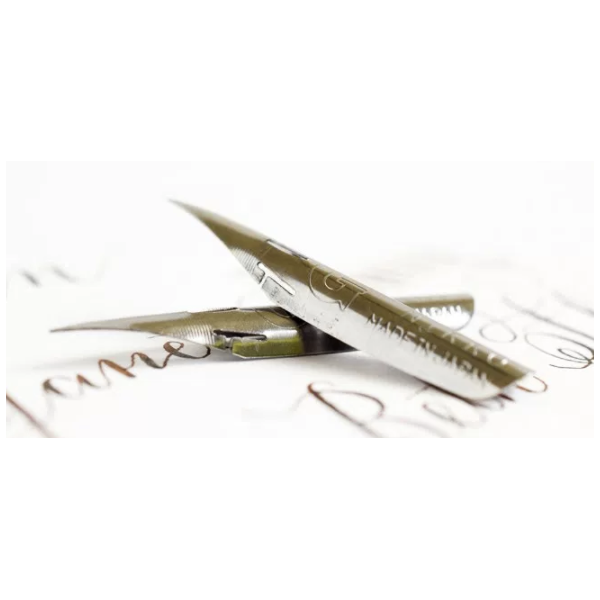It's a fact that surprises many people, but paper can wear down metal over continuous use. That’s why traditional fountain pen nibs are tipped with a tough material. That’s also why fountain pen nibs expensive.
Suggestion: If you prefer watching how to polish, jump to the bottom of this page.
This is not an issue with dip nibs, which rust or snap before the tip wears down, but it can be an issue with other metal nibs, such as our Sketch nibs. They won’t rust, snap, or break, but the tip will wear over time and with use because they last longer. That’s why we suggest you learn how to smooth or polish your nibs. This will keep them in top operating shape. It doesn’t take much time or trouble, and helps you pay attention to the fine points of nib care.
Polishing Sketch Nibs
We provide our Sketch nibs in a polished state, so they should draw smoothly out of the box. They should not catch on paper when you move them in any direction, and the drawn line should be solid and continuous.
Your Sketch nibs will wear unevenly over time and through use, so we recommend that you smooth them from time to time. We provide a piece of lapping paper you can use. You can also order more sheets of paper if you need them, from us or other suppliers.
There are two key tricks to keeping your Sketch nibs smooth. The first is to position the nib lightly over the lapping paper. Don't press firmly, just let the nib skate over the paper. The second is to make just a few swirls of the nib on the paper, then check your results. It doesn't take much to remove the scratchiness, and you don't want to remove more material from the Sketch nib than is necessary.
You decide when you're finished by the feel of the nib on paper. You can do this with or without ink. We recommend you test the Sketch nib without ink, since you might have to make a few more strokes polishing the nib. This means you start with a clean nib, polish, dip it in ink and test it, then wipe the nib clean and continue this way until you are satisfied with the smoothness.
You can leave the Sketch nib in your pen when you polish it if you prefer. Just make sure there is no ink in the pen. You can also insert the nib into a nib stick for polishing and testing, which is handier for some people. Make sure the nib is clean and free from dried ink. You can use water to moisten the tip of the nib although that’s not necessary. You can fill your pen with water or drip a few drops onto the lapping paper.
As a last step, make sure the tynes (sides) of the nib are aligned correctly and one tyne isn't "cocked" or riding over the other.
Start By Drawing a Few Tight Circles
Start by drawing a few tight circles on the lapping paper. Five seconds tops. Don't spend half a minute wearing down the nib. Some people prefer drawing figure 8s, but this is not recommended. Your hand tends to roll back and forth at the same spot while drawing the figure 8, and this can polish the tip unevenly.
Test your first pass by drawing on paper. If you want to use ink, dip the nib into ink, draw, then wipe the nib clean. Does the nib feel smooth? If not, polish again, just a few more circles. You don’t want to remove more material than you have to. This time roll the nib so you polish all undersides of the tip.
If you feel any scratchiness, turn the nib tip in the direction of the scratchiness. Draw a few more circles, then test.
Reshaping vs. Smoothing
Smoothing the nib means removing as little of the nib as possible to get a smooth drawing nib. Reshaping means changing the shape of the nib to shape of your drawing line.
Reshaping is a more extreme process. It means removing material from the nib that changes the behavior of the nib, and this takes practice and experience. Remember: You can make broad nibs finer and thick nibs thinner, but you can’t make them broader or fatter. Reshaping a nib can have dramatic effects on the performance of the nib.
For more information on polishing nib, read Notes for Richard Binder's Nib Smoothing Workshop.



